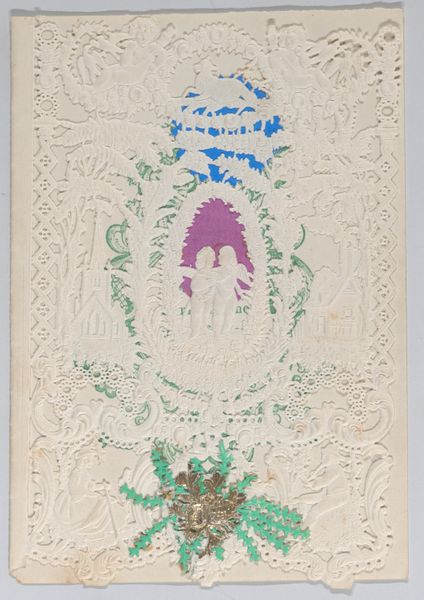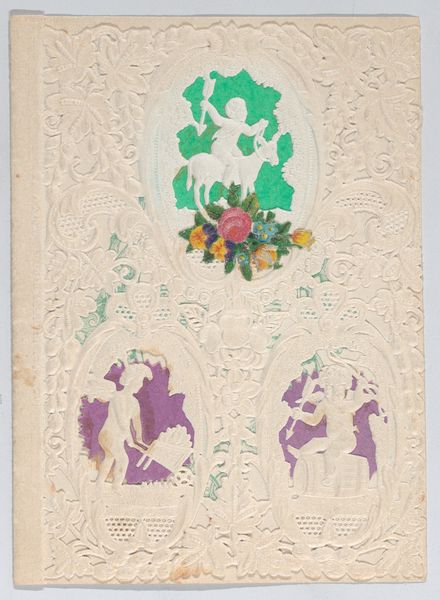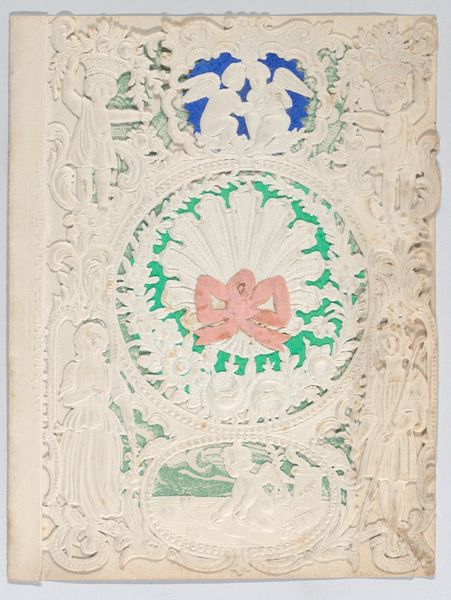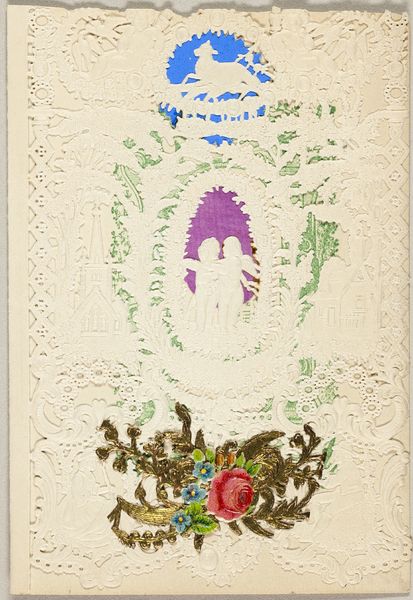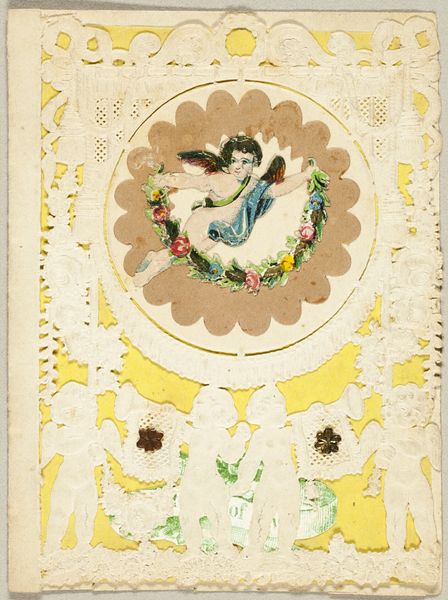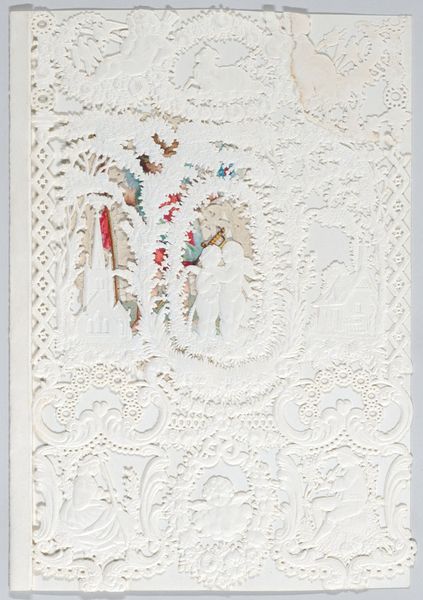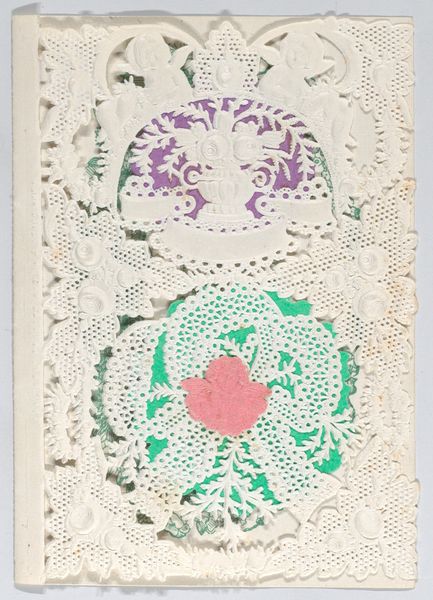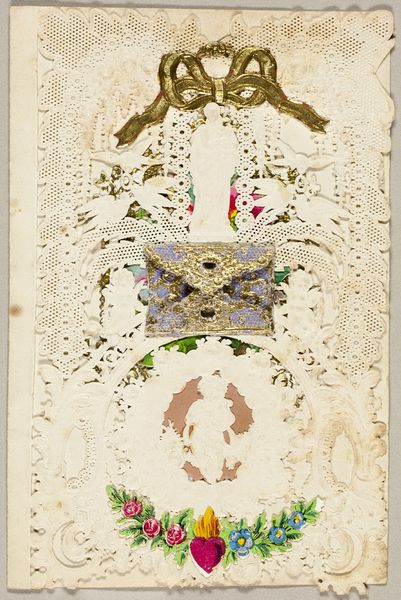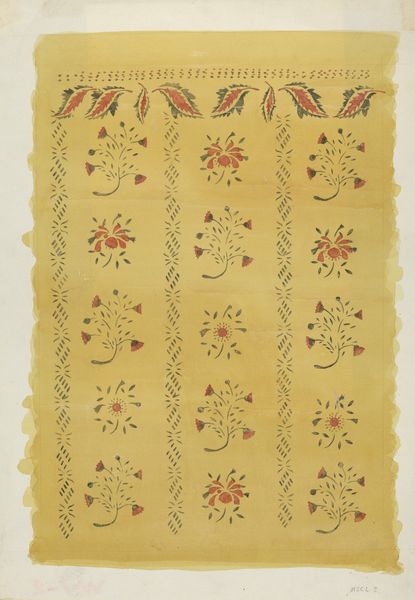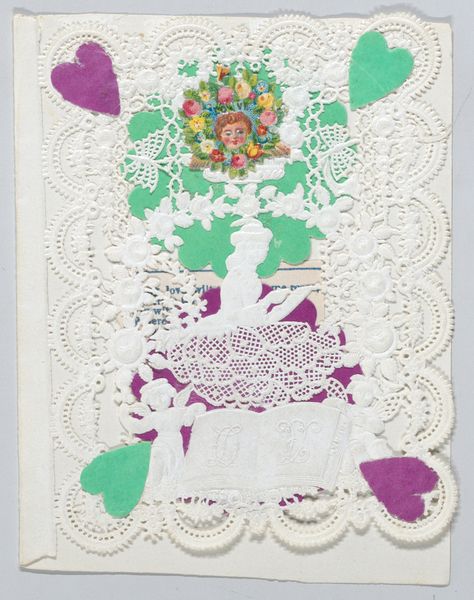
Dimensions: Width: 3 3/8 in. (8.5 cm) Length: 4 13/16 in. (12.3 cm)
Copyright: Public Domain
Curator: Welcome. Today, we’re examining "Valentine," a decorative linocut print created in 1861 by an anonymous artist, now residing at the Metropolitan Museum of Art. Editor: My initial reaction is one of complex emotions—a dance of sweetness and intricacy, but also, something about the tight, almost obsessive detail gives it a melancholic edge. Curator: I find myself captivated by the sheer visual texture. Notice how the negative space aggressively interacts with the positive forms. The repeating patterns construct meaning via the very structural rhythms—an exploration of what form communicates apart from content. Editor: The imagery is quite evocative. A church steeple points towards heaven; lovers embrace under a shaded tree—such traditional motifs. But then there’s the overall sense of being confined. The figures, buildings, and landscapes appear caged in lace. Are they trapped by idealized romance? Curator: Cage, perhaps less so, than supported. Consider lace's function—structurally sound for something delicate. See how its intricate framework creates an arena in which visual ideas find themselves bounded. Editor: I think it goes beyond mere structural framing. Lace, throughout history, has symbolized domesticity, often binding women. Are these lovers truly free within these societal expectations represented here? The little vignettes—a reading woman, cherubs—reinforce established social roles. Curator: While the image contains multiple distinct, separate arenas of representation, consider the formal elements that combine them into a single visual experience: namely color and compositional directionality. A strong diagonal thrust across and throughout helps generate this holistic, unified feeling. Editor: A sense of foreboding perhaps underlies the traditional romantic signifiers; what’s interesting to me is the degree of cultural information that is layered here: love and loss are suggested in equal measure. Curator: True; to me the strength of the art object hinges on precisely its compositional force, irrespective of representational fidelity or clarity. Editor: In this confluence of tradition and expectation, we perhaps find a lasting echo of Valentine’s complex romantic intentions and constraints. Curator: And it’s in exploring these visual and conceptual connections that we come to appreciate the multilayered and enduring structure.
Comments
No comments
Be the first to comment and join the conversation on the ultimate creative platform.


